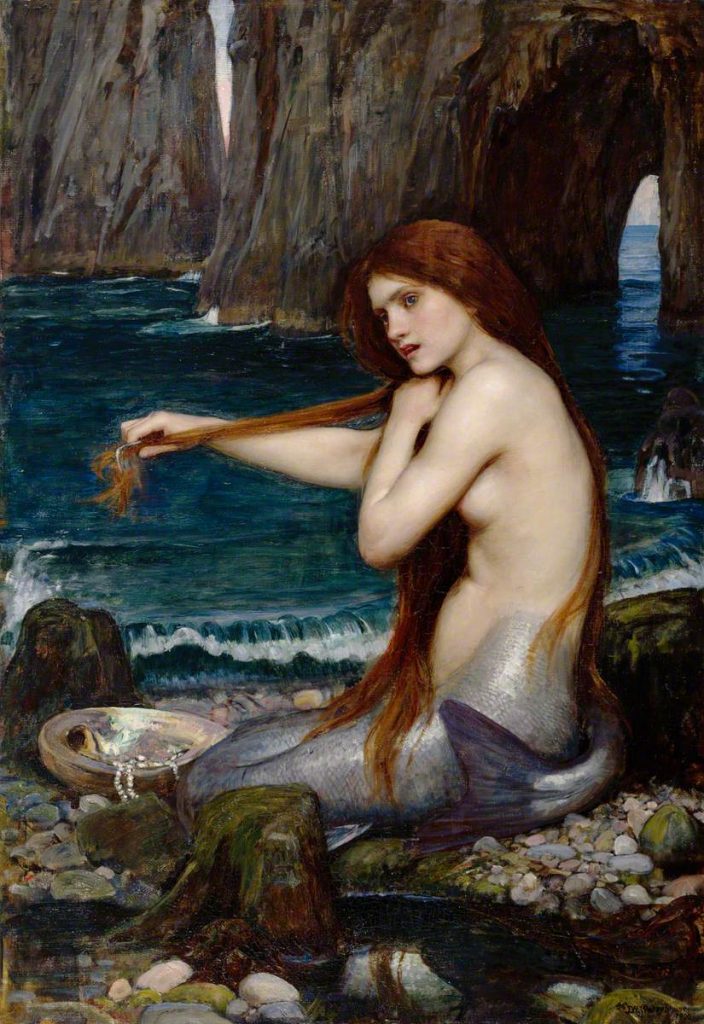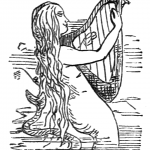‘The Mermaid of Black Conch’ takes us on an enchanted journey

John William Waterhouse’s portrayal of a mermaid is at the Royal Academy of Arts. Public Domain
/ TRAVELS IN MY MIND

“Our battered suitcases were piled on the sidewalk again; we had longer ways to go. But no matter, the road is life”
– Jack Kerouac
I was three-fourths of the way through fellow UEA alumna Monique Roffey’s Costa award-winning ‘The Mermaid of Black Conch‘ when I heard Bridget Kendall ask on the radio: “When did mermaid stories first appear?”
The question gave me pause. I knew when mermaids first appeared in my imagination. Like many people, for me it was via Hans Christian Andersen’s 19th century ‘The Little Mermaid’ (not the film but the story in a book).
‘The Little Mermaid’ is routinely described as a bedtime story for young children, perhaps to be read out by a parent. But my mother had long since ceased to read to me. In fact, I can’t really remember if she ever did read to me; more likely she told me stories. When I wanted a story from a book, I had to read it myself. This was a powerful incentive to get on with understanding what each letter of the alphabet meant and I do remember reading books from the time I was fairly young. Add to that the fact that I was typing – on my father’s old Remington – at age seven.
Suffice it to say, that I recall reading ‘The Little Mermaid’ to myself – turning the pages in wonder at the visions conjured up by the big, beautifully illustrated storybook , the mermaid with her long hair and fishtail swimming in and out of the sea, and in and out of my dreams.
Everyone may have their own particular first mermaid story, but what about the very first one for all of mankind? According to that repository of all knowledge (Google), one of the earliest mermaid legends appeared among the Assyrians around 1000 BC. I have no idea if that’s true but the idea of a half-and-half creature – half-human, half-animal – is hardly new and appears in various iterations in different guises in disparate cultures all over the world.

An illustration of Vanity Fair’s Becky Sharp as a man-killing mermaid, by the author William Thackeray. Public Domain
Mostly, mermaids have been portrayed as dangerous shape-shifters (like mami wata, the water spirit venerated in parts of Africa and in diasporic African populations in the Americas).
They are also seen as sirens (note William Thackeray’s illustration of Becky Sharp as a temptress, a slayer of men) and this is what Monique Roffey refers to throughout in ‘The Mermaid of Black Conch’.
Aycayia, a woman of the now extinct Taino indigenous people is shown to been cursed by other Taino women for being attractive to their men. The reference to Tainos is interesting. When we were in Haiti but more especially in the neighbouring Dominican Republic, both which share the island of Hispaniola, the Tainos seemed like a gaping, wounding, permanent absence. The Taino, who inhabited most of Cuba, Jamaica, Hispaniola and Puerto Rico when the first Europeans made contact in the late 15th century, are still remembered and mourned in the Caribbean.
Anyway, Aycayia was cursed. The curse means she becomes a mermaid, left to travel the seas alone for centuries. One day, she is fascinated by the sound of David, a fisherman’s, guitar and singing. She starts to pop up when she hears the engine of his boat. One day, she hears it but does not realise the danger lurking nearby and the fact that David has merely swung by and is now back onshore.
Aycayia is captured by American tourist-fishermen and strung up on the island of Black Conch. David cuts her down, hoping to release her back into the sea, but before he can do that, a great transformation ensues.
The story is magical, a lament for a long lost people as well as for the dreams that still beat in all of our breasts.
Ultimately, ‘The Mermaid of Black Conch’ is about the destructive power of vengeance, the frantic efforts to counter it with love and also, dispiritingly, this real-word truth: something broken can’t always be properly fixed.
But we should keep trying – that too is a message from this book.
Read it if you can.

